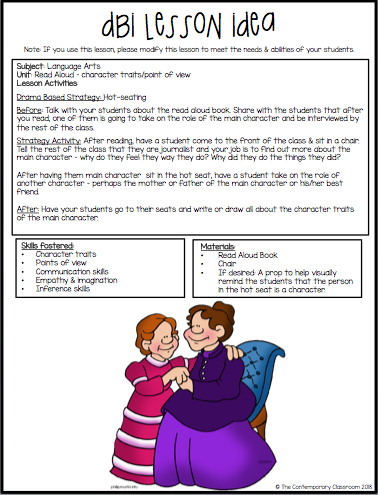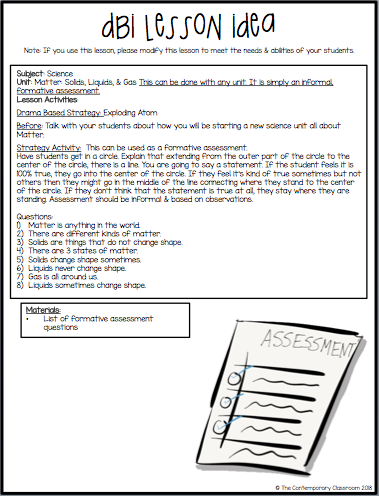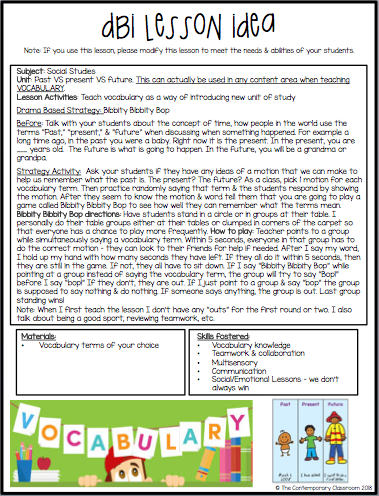Course progress
all about
Drama Based Instruction
What is DRAMA BASED INSTRUCTION?
Drama based instruction is an instructional approach that includes using drama based strategies.
Also called, Drama Based Pedagogy, the term was coined by the University of Texas’ Katie Dawson & Stephanie Cawthorn. It stems from the American creative dramatics influence that has existed since the 1920s.
It incorporates the use of strategies that are typically improvisational.
The strategies are meant to be guided by the teacher to enable students to imagine, enact, & reflect upon human experiences.
The role of a teacher who uses drama based instruction is to design & facilitate a learning environment that enables students to acquire and apply their own knowledge through the use of different instructional strategies, such as activating dialogue, image work, theatre games, & role playing; different grouping strategies; and other best practices that will enable the students to engage. The role of the students is to engage in the instructional strategies.
It can be multi-sensory & integrates auditory, visual, & kinesthetic types of learning styles.
It fosters metacognition/active learning; communication abilities; problem solving, critical thinking, & collaborative skills; gives immediate feedback via discussions; it is multimodal; & fosters creativity.
It aligns with Vygotsky’s social learning theory, social constructivism, that acquisition can occur by observing & imitating.
RESEARCH BASED BENEFITS OF DRAMA BASED INSTRUCTION
A report by the President’s Committee on the Arts and Humanities showed that DBI has a “positive, significant impact on achievement when led by a classroom teacher rather than a teaching artist;” when implemented “more than 5 times;” and “integrated into science & language arts.”
HOW IT CAN LOOK IN THE CLASSROOM
Drama Based Instruction has so many strategies which allows it to be used in so many ways. Below are some of our favorite strategies in action.
Exploding Atom, the drama based instructional strategy shown below, is a great strategy to use for formative assessments. For example, set the expectations by saying “take a step all the way forward if this statement is always true, a small step forward if this statement is sometimes true, or stay at the edge of the circle if the statement I am about to say is never true.” Then start asking several assessment questions, one at a time of course, and allowing students to recenter themselves at the edge of the circle after answering each question. Examples of a question might be “y is a vowel” or “animals are mammals” or “all mammals drink milk from their mothers” etc.
This is also a great community building tool by asking questions like “I have a brother” OR “I love to eat strawberries” etc.
“This is not a…” is a great strategy to use to get students used to the expectations of behavior during drama based learning experiences and comfortable with using their imagination. It can be paired with the book “This is Not A Stick.”
Hot Seating is a great strategy to use when teaching character traits and/or learning about public figures and historical events.
Artifact can be used in many ways such as introducing students to a new read aloud book and having them practice inferencing what the book may be about by observing the artifacts shown to them OR a new unit of study.
“Yes, And…!” is a strategy that can be used to introduce fictional story telling and have students become comfortable creating stories. It is always a great way to get them comfortable with the idea that during drama style learning experiences they need to play along. This strategy can also incorporate “no, but” in which case students are able to choose between using “yes, and” or “no, but” to connect their ideas.
Role Playing is similar to the instructional strategy of simulations. During role playing, the students take on the roles of characters and events to form a deeper understanding. This can be used as a way to allow students real world-esque learning opportunities such as creating a rainforest in your classroom and having students take on the role of researchers and explore the rainforest through various lessons. It can also be used in math by having students first act out a word problem or number sentence to connect the concrete-representation-abstract stages.
Donkey, which is a drama based instructional strategy similar to Bibbity Bibbity Bop. Bibbity Bibbity Bop is described below in “DBI lesson ideas.” This strategy is a fantastic way to teach vocabulary.
Looking for more DBI strategies?! Check out these.
THE IMPORTANCE OF SETTING EXPECTATIONS
As with any instructional strategy, classroom management is imperative. Without it, little to no learning can take place. During drama style learning experiences, students are often actively moving around, talking either peers, etc. So, with Drama Based Instruction, it is beneficial to create clear expectations that the students are familiar with and understand they should abide by when this type of learning experience takes place. Otherwise, undesired behaviors such as refusing to use imagination and/or taking the playful aspect of DBI to far and turning it into goofing around/silliness may take place…which prohibits learning to occur.
To set clear expectations, it is best to have the students begin one of their first DBI lessons by creating a contract as a whole group. Having them take place in the creation of the expectations allows them to engage, take ownership, recall, be understanding of, and take ownership of the class agreements. Hanging the agreements in a visible space for a long period of time allows them to refer to it and problem solve if needed. Reviewing their class agreements at the start of the first few Drama style learning experiences will aid in building a strong foundation.
Finally, having attention getters to bring the class together is beneficial. It is helpful to use an assortment of attention getters and practice them with the students beforehand. Attention getters can include:
Teacher: Hocus Pocus Students: Everybody focus!
OR
Teacher: Eyes on the ceiling, eyes on the floor, eyes on me.
THE IMPORTANCE OF QUESTIONING
Drama Based Instruction is not only FUN but it can also be full of RIGOR!
The rigor comes in how you, the teacher, introduce & conclude the activity.
It is important to introduce the lesson with an essential question. This helps students understand the purpose of the game & focus on meeting the academic objective of understanding.
When closing, it is important to gather the students together and ask several summarizing questions to focus in on the learning of the playful activity.
First, have students DESCRIBE the strategy/activity that was just completed. Then, ANALYZE the meaning of the things done. Ex: Teacher: What did it mean when she jumped up & down? {Student: She’s excited} What other feeling might it represent? {Emergency. Frustration. etc}. Finally, CONNECT the analysis to the essential question, the instructional goal.
Bottom Line: Drama Based Instruction, DBI, can bring the content to life for the students. DBI happens when a teacher integrates theatre games, image work, or role playing to design and provide a fair & equitable learning environment that enables students to successfully engage in learning. Questioning is key in providing depth when using DBI. Before beginning the activity ask the class an essential question to guide their thinking deeper than just thinking “this is so fun!” After engaging in the activity come together and, as a group, DESCRIBE what just happened, ANALYZE the meaning of what happened, and CONNECT the analysis to the essential question!
We want to hear from you! Have you participated in drama based instruction before? If yes, when & how? Click the “quiz” button below to respond!



